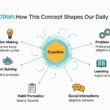When most people hear “automation” in marketing, they think of rigid workflows: “If a customer does X, then send email Y.” It’s functional, sure, but it’s also limited. Traditional automation tools follow rules. They don’t adapt, learn, or question those rules. They just execute them with no regard for performance shifts, human nuance, or changing customer behaviors.
That kind of rule-based automation served marketers well in the early days of digital growth. For small teams, setting up a few triggered email sequences and scheduled social posts was a game-changer. But as the digital landscape grew more complex—and consumer expectations grew higher—those tools began to show their limitations.
Enter AI agentic marketing. These aren’t just bots—they’re digital collaborators that learn from outcomes, analyze patterns, and optimize campaigns in real time. They don’t just automate—they adapt. This shift represents more than just an upgrade in tools; it’s a whole new way of thinking about how marketing can be done.
Instead of running a static campaign for months and hoping it performs, AI agents monitor metrics like click-through rates, bounce rates, conversion data, and engagement signals constantly. They recognize trends quickly and make updates without you having to lift a finger. They can test different ad copy, explore new segment combinations, adjust campaign budgets, and even write fresh headlines based on engagement data.
This level of intelligence means your marketing doesn’t stagnate—it evolves. Think of an AI marketing agent as a junior strategist that runs experiments constantly, reports back with insights, and suggests smart pivots. They’re like an extra set of eyes that never sleep and an analyst that never stops crunching data.
For example, let’s say your landing page has a high bounce rate. In the traditional world, you might not notice until weekly reports are reviewed. Then you’d brainstorm ideas, run A/B tests, and wait days or weeks for results. But with AI, the system flags the issue immediately. It can test alternative headlines, layouts, or calls-to-action automatically, learn from user interactions, and optimize the design to improve retention.
Similarly, if your email open rates start to dip, the AI can analyze which subject lines have historically worked well with a specific segment and suggest or even deploy a better option. It could adjust send times to better match engagement windows or recommend a complete copy overhaul if engagement has been low over time.
What truly separates AI agents from traditional tools is their holistic view. They don’t operate in silos. A change in your email campaign might prompt the AI to also adjust social messaging, retargeting ads, or even update your website banners. They ensure that every element of your digital presence is aligned and responsive to real-time data. That kind of coordination is almost impossible to achieve manually—especially for small teams.
AI marketing agents are also faster. What might take a human team days or weeks of testing and analysis can now be done in hours. That speed gives marketers the edge to act on trends while they’re still hot. In a world where consumer behavior shifts rapidly, staying agile isn’t just a nice-to-have—it’s essential.
Beyond optimization, AI agents are powerful strategic informants. They sift through thousands of data points to surface insights you might miss. For instance, they might notice that users from a particular region respond better to long-form emails, or that customers acquired through Instagram tend to make larger purchases. With this information, you can make sharper, more confident decisions about where to spend time and budget.
They can also assist with audience discovery. AI can help identify new segments based on lookalike behaviors, predict which users are most likely to convert, or even flag potential churn risks based on decreased engagement. It’s like having a data scientist embedded in your campaign tools.
And let’s not forget the content side. Some AI marketing agents are now equipped to generate content in your brand voice, repurpose blog posts into captions or email blurbs, and even suggest topics based on trending keywords and competitor activity. This content agility is key for teams that are under pressure to deliver consistent messaging across multiple platforms.
But here’s the real kicker: all of this power is becoming more accessible. You don’t need a massive enterprise software budget or a full-time IT team to implement AI-driven tools. Many platforms offer intuitive interfaces, plug-and-play integrations, and flexible pricing for small businesses. The learning curve is no longer a barrier.
Of course, human judgment is still crucial. AI can suggest and implement changes, but strategic vision, creativity, and empathy still belong to you. It’s important to review AI-generated content, check in on tone and voice, and ensure that what the algorithm suggests aligns with your values and goals.
In the end, AI marketing agents aren’t about removing marketers from the equation—they’re about amplifying what marketers can do. They eliminate the grunt work, reduce guesswork, and deliver intelligence that was previously out of reach for many small teams.
Traditional automation was about doing more with less. AI marketing agents are about doing better with less—and doing it continuously. As marketing becomes more complex and more personalized, these digital collaborators are quickly becoming essential tools for businesses that want to keep up, stand out, and scale smartly.
Welcome to the future of marketing support. It’s strategic. It’s smart. And it’s no longer just for the big players.




